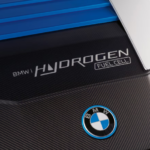The latest FAME II notifications, will be available for electric/hybrid cars only if they are less than Rs 15 lakh in price and used as taxis; will not cover any electric vehicles (EV) available in India right now — either mass market or premium.
The specifications not only give a price cut off of Rs15 lakh but also a battery power (15 kilowatt hour/100 km), a range cut off (140 km) and a top speed specification of 70km/hour.
This effectively keeps out not only mass market electric cars but even luxury/ premium vehicles being planned for the Indian market.
FAME II doesn’t offer any demand incentive for EVs in the personal mobility space or the luxury segment in specific, and we do not see any demand emerging for the luxury segment.
The incentive specs-sheet would mean vehicles lined up by companies like Toyota Kirloskar Motor and Maruti Suzuki, who are planning a big e-mobility push, will also not get any tax benefits.
However as per Toyota’s vision of mobility 2050, all electrified vehicle technologies will remain relevant and they would continue to work with government.
Others like M&M and Tata Motors have already tweaked their e-mobility plans to give it a fleet focus.
In our opinion, for an optimal push of EV in the personal mobility space, demand incentives should be extended irrespective of any price bracket or size of the vehicle, as that would stimulate demand from the private car owners and encourage a faster adoption of EVs in this market.
Currently the electric passenger car market is a minuscule part of the overall e-vehicle market and fleet usage contributes over 80 per cent of electric four wheeler sales.
Reference- Times Of India, FAME website, MoneyControl website, livemint website






